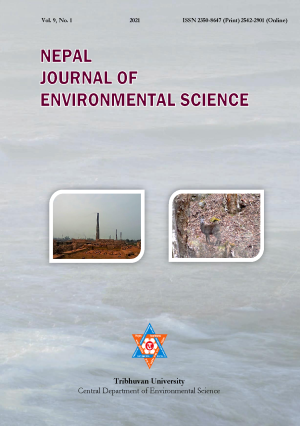Water quality and health risk assessment of trace elements contamination in Ghodaghodi Lake, Sudurpaschim Province, Nepal
DOI:
https://doi.org/10.3126/njes.v9i1.36603Keywords:
Ghodaghodi Lake, health risk assessment, Nepal, trace elements, water qualityAbstract
The contamination of trace elements (TEs) in freshwater sources has become an alarming issue globally. This study evaluates the contamination level of TEs, their spatial distributions, and the health risks in the Ghodaghodi Lake complex, Nepal. Altogether, ten water samples were collected, and As, Ba, Cd, Co, Cr, Cs, Cu, Li, Mn, Ni, Pb, Rb, Sc, Sr, Ti, Tl, V, Y, and Zn were determined by inductively coupled plasma mass spectrometry. The results revealed that Sr, Zn, Cu, As, Sc, and Rb were dominated TEs, contributing to the contamination. The principal component analysis and correlation matrices demonstrated both the geogenic and anthropic origin of the TEs in the lake. The water quality index (WQI=10.08) and hazard indices <1 exhibited that the TEs pose a low risk to human health and, hence the water of the lake was suitable for drinking purposes. However, exposure risk assessment results suggested that children are relatively more vulnerable compared to adults. The outcome of this study will provide new insights to local people and the concerned authorities for the sustainable management of Ramsar listed Ghodaghodi Lake complex.
Downloads
Downloads
Published
How to Cite
Issue
Section
License
This license enables reusers to distribute, remix, adapt, and build upon the material in any medium or format for noncommercial purposes only, and only so long as attribution is given to the creator.




